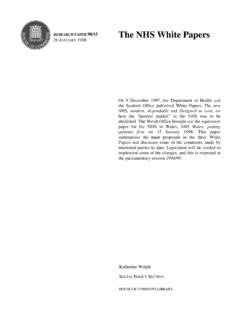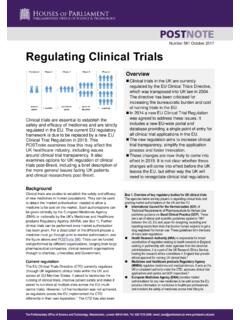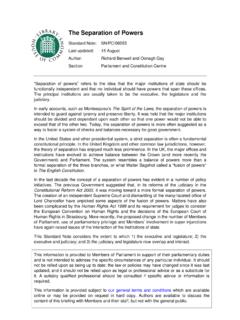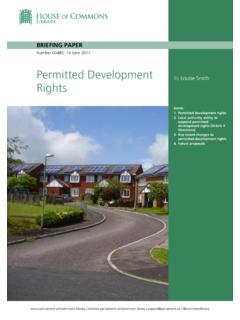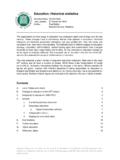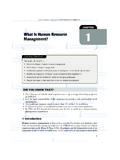Transcription of Inflation: the value of the pound 1750-2011
1 inflation : the value of the pound 1750-2011 RESEARCH PAPER 12/31 29 May 2012 The Library is often asked how the purchasing power of the pound has changed over various periods. This paper presents data back to 1750. Between 1750 and 2011, prices increased nearly 180-fold. Since 1912, prices have increased just over 90-fold. This paper updates RP06/09. Grahame Allen Recent Research Papers 12/20 Sunday Trading (London Olympic Games and Paralympic Games) Bill [HL] [Bill 335 of 2010-12] 12/21 Social Indicators 12/22 Economic Indicators, May 2012 12/23 Financial Services Bill.
2 Committee Stage and Report Stage (Day One) Report 12/24 Local Government Finance Bill 2012-13 [Bill 4 of 2012-13] 12/25 Unemployment by Constituency, May 2012 12/26 Electoral Administration Bill [Bill 6 of 2012-13] 12/27 Local Elections 2012 12/28 London Elections 2012 12/29 Members pay and expenses current rates and a review of Research Paper 12/31 This information is provided to Members of Parliament in support of their parliamentary duties and is not
3 Intended to address the specific circumstances of any particular individual. It should not be relied upon as being up to date; the law or policies may have changed since it was last updated; and it should not be relied upon as legal or professional advice or as a substitute for it. A suitably qualified professional should be consulted if specific advice or information is required. This information is provided subject to our general terms and conditions which are available online or may be provided on request in hard copy. Authors are available to discuss the content of this briefing with Members and their staff, but not with the general public.
4 We welcome comments on our papers; these should be e-mailed to ISSN 1368-8456 Contents Summary 2 1 Introduction 3 2 Sources 4 3 Charts 5 4 Results and interpretation of tables 8 5 Specimen calculations 9 6 Data 10 Tables Table 1: Price Index 1750-2011 10 Table 2: Purchasing power of the pound 1755- 2011 16 Table 3: Purchasing power of the pound 1987- 2011 17 RESEARCH PAPER 12/31 Summary This paper presents a price index covering the period 1750 to 2011, illustrating the way in which the purchasing power of the pound has changed over the long-term.
5 Over the period as a whole, prices have increased 180-fold. Thus, one decimal penny in 1750 would have had greater purchasing power than a pound in 2011. Prices were around 20% lower in 1939 compared to 1919. Since 1934 prices have risen in every year except for 2009. In 2011, prices were nearly 60 times higher than in 1934. Prices at the end of the 19th Century were more than 30% lower than at the beginning of the century. 2 RESEARCH PAPER 12/31 1 Introduction inflation - the increase in the general level of prices over a specified period - reduces the internal value of a currency.
6 So, if prices double, any given (nominal) amount of currency will buy half the goods and services it previously did. On the other hand (although unusual in the UK since the Second World War) a period of falling prices results in an increase in purchasing power. This paper presents a price index covering the period 1750 to 2011 and illustrates the changing purchasing power of the pound over the long-term. No attempt is made to measure changes in the external value of the currency as a result of movements in exchange rates, but changes in the prices of imported goods are reflected in the price index.
7 It must be stressed that, for a number of reasons, such an exercise is very approximate. Expenditure patterns have changed dramatically over the past 260 years. Many products now commonly purchased (cars, electrical appliances, processed foods, etc) simply did not exist in 1750 and, conversely, goods that consumed a large share of household budgets in the eighteenth century - candles for instance - are now an insignificant part of most families expenditure. It is, however, possible to compare price levels over the long-term by linking price indices covering relatively short periods into a single series.
8 Even so, indices covering only a few years can become unrepresentative if they are not adjusted to reflect changes in expenditure patterns. Today s Retail Prices Index (RPI), for example, is annually updated to reflect changes in consumers tastes, and new products and services. For example, subscription to cable TV was taken out of the 2012 basket , while bundled communication services (telephone charges, internet access and television) were included to reflect the changing way in which people are buying such services.
9 It is also worth noting that the RPI is an overall index and says nothing about the price of individual items flat screen TVs have fallen in price while others have risen and that different individuals will face different inflation rates dependant on their purchase mix. A further problem with long-term comparisons involves changes in the quality of goods over the years. Although the RPI series now makes adjustment for quality change due to changing product specifications earlier series did not.
10 For example, while it is possible to compare the price of a particular make and model of motor car in 1935 with that of one in 1959, it is much more difficult to identify the degree that the increase in price reflected an improvement in manufacturing quality and specification. In addition, the further one looks back into history, the more difficult it is to obtain reliable information. The first official consumer price index started in 1914. This was the Cost of Living Index (COLI) that reflected changes in the cost of providing a standard of living prevalent in working class households.


